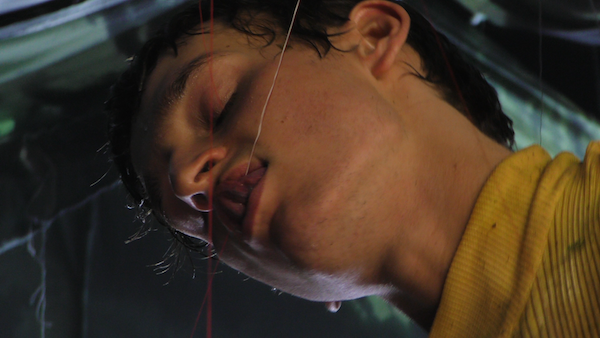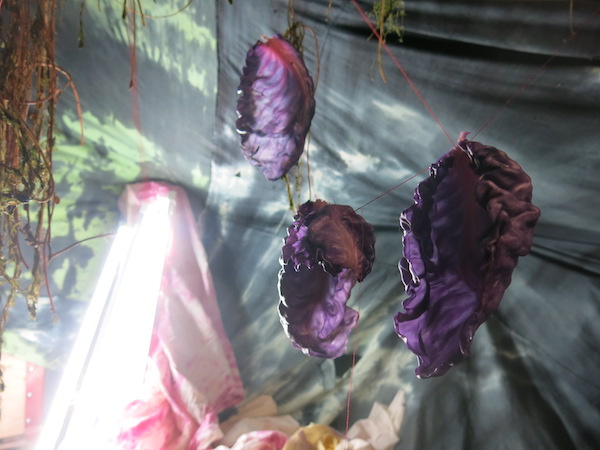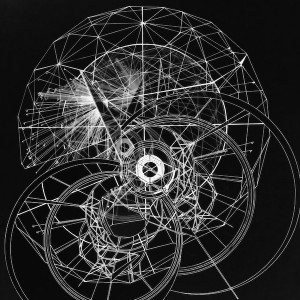Lafayette Anticipation associate curator Anna Colin talks to artist Tyler Coburn about Ergonomic Futures, a speculative project engaged with art, design, science, anthropology and writing. In this interview, Coburn discusses the research, production process and network of collaborators of a multilayered project ultimately concerned with the futures of humankind. Anna Colin: When one comes across your museum seats Ergonomic Futures (2016—) in contemporary art exhibitions—and soon in natural history, fine art, and anthropology museums—they look… [read more »]
nils lange + saliva : l’eau des algues
L’Eau des Algues

Nils Lange and Saliva, L’eau des Algues, 2016, Video Still.
Two alchemists already aware of each other’s Instagrams meet for the first time in a gay sauna. They are swimming; it’s the Hood By Air afterparty in Paris. They are Lukas Hofmann and Nils Amadeus Lange.
Months later, they meet again. They are on the edge of yet another steaming pool; it’s the Manifesta Biennale closing event at Cabaret Voltaire. They are performing the perfume titled “L’eau des Algues.”

Nils Lange and Saliva, L’eau des Algues, 2016, Video Still.
Head notes: Zürich during the summer is all about lunch breaks al fresco, air sieved through the mountains, one’s toes sinking into lake silt, grotesque wealth. Hofmann and Lange spend much of their time swimming as preparation for the performance, diving for algae. Upon entering Cabaret Voltaire, guests were greeted with the aroma of frankincense.
Heart notes: The palette this time is violet and green: royalty and harmony, respectively. Malbec and cash. A bruise and algal bloom. A salad of red cabbage, beetroot, and turmeric was used to dye the costumes in “L’eau des Algues.” Pigments were affixed to the fabric with urine. Hoffman is the type of neopagan to use clothing as ritual materia. Lange, on the other hand, has developed a performative study of the witch; his alter ego is truly banshee (think thick black lipstick, acrylic nails clicking on the iPhone’s surface). Together, the perfumiers dressed Cabaret Voltaire like it was a model: leaves of the dying cabbage were peeled off and laid on fluorescent tube lighting, strung into a mobile or cobweb by red thread used to sew the garments. Mixing with palo santo smoke, milk-dense fumes poured out from a nugget of dry ice submerged in a cup of Lange’s piss. Later, this cocktail was tossed into a pool representing the Limmat river, a haze already hanging to its bubbling surface. Tangled across the cauldron’s water were those clumps and strands of algae the artists collected. This was Zürich in the fever dream of a stylist, drunk off too many glasses of Malbec. Variably, it was a lounge for the alchemist faculty of the Swiss School of the Occult. Variably, a living diorama of swamp-based alternative communities.

Nils Lange and Saliva, L’eau des Algues, 2016, Video Still.
Base notes: What resolved “L’eau des Algues,” gave it dimension, was music. Initially, an associate of Lange’s positioned in the crowd sang “Forest Families” by The Knife: “Too far away from the city / We came to breathe clean air / Nature lovers’ safe oasis / And the mothers walked towards the forest.” Later, the song started up again, and with some encouragement the audience sang along. Hofmann did “Colors of the Wind” from Disney’s Pocahontas, which, carried by his delicate voice, became a simple and beautiful anti-capitalist ode: “Come run the hidden pine trails of the forest / Come taste the sun-sweet berries of the earth / Come roll in all the riches all around you / And for once, never wonder what they’re worth.” But the Disney movie (and the foul, cartoonish American imaginary it represents) was not just an ironic note in Lange and Hofmann’s perfume. Childish sincerity is a brave thing to present in contemporary art; possibly it this pitch of sincerity that is needed to quit the unpaid internship and paint unabashedly, hollow the banks, invest in solar, have one’s hand in a vigorous and autonomous community (another verse from “Forest Families”: “Too far away from the city / Some kids left on their own / They said we had a communist in the family / I had to wear a mask”). We will need it – no matter how we choose to transition, the next decade, the next few years, will be frightening. A tremor of anxiety (and the pheromones released with it) ran through the crowd at Cabaret Voltaire as Lange lit some of the dyed fabrics on fire; the final gesture of the performance resulted in black smoke and a definite sense of collective hazard. Though this too followed an alchemic logic: extract, incorporate, ferment, refine, and reproduce with a novel purity. Paired with the acrid stench of burning fabric was the smell of sage, from Latin salvia: “healing plant.”

Nils Lange and Saliva, L’eau des Algues, 2016, Video Still.
Artists Nils Amadeus Lange / Lukas Hofman (Saliva)
Location Cabaret Voltaire (As Part of the Manifesta)
Curator Manuel Scheiwiller
Camera Manuel Scheiwiller
Text Nat Marcus










































































